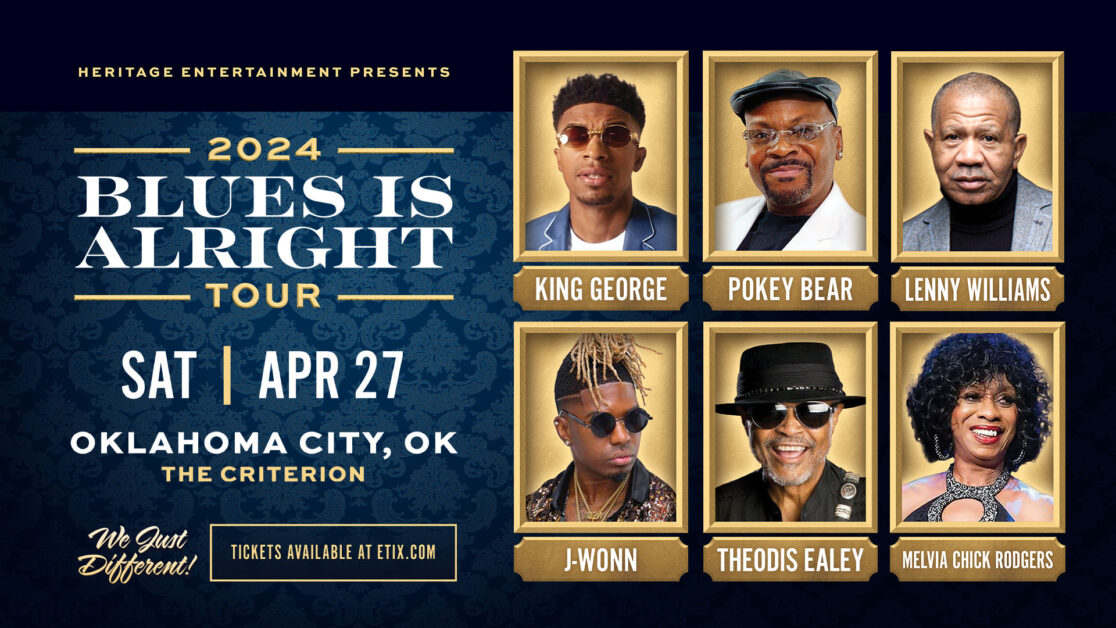‘ Gwen’s Transness Is A Total Joy
Written by on June 15, 2023
One of the biggest character arcs in Spider-Man: Across The Spider-Verse belongs to Spider-Gwen — and her journey couldn’t feel more trans.
— Spoiler alert: This story contains major spoilers for Spider-Man: Across The Spider-Verse —
From the very moment Across The Spider-Verse (ATSV) begins, you know you’re in for one hell of a ride. The production logo thrashes onscreen in a glitched-out flurry as we’re treated to an angst-soaked drum solo. This is a film replete with colour, but as we catch up with Gwen for the first time since 2018’s Spider-Man: Into The Spider-Verse, there’s one recurring palette that stands out: the unmistakable hues of the trans flag.
Gwen’s entire home world is drenched in them at every turn: streetlights, shadows, even zip ribbons and motion blur are all tinged in pink, blue and white. Even the title card that welcomes us to her hometown of Chelsea is blasted onscreen in punky brushstrokes of the trans colours.
It’s in this prologue, shown entirely from Gwen’s perspective, that we see the two visual motifs that make her transness pretty much irrefutable. The first is above the doorframe in Gwen’s bedroom, where she has an actual trans flag hung up and emblazoned with the words ‘PROTECT TRANS KIDS’. Denialists on social media cried that this was purely emblematic of her allyship with trans people, but seriously, how many cisgender teenagers actually have trans flags hung up in their bedrooms?
The second shows how it’s heavily implied that Gwen’s father — police captain George Stacy — isn’t just aware of his daughter’s transness but supportive of it: a trans flag is affixed to the front of his coat, directly above his badge. Parallel universe or not, the only logical explanations for a cop to wear a trans flag on their uniform is that they’re trans, or supporting a trans family member.
That said, George’s arc in ATSV also encompasses a coded “conservative dad struggles with his child’s queerness” narrative. While he’s seemingly cool with actual queer people, the man hates superheroes — especially Spider-Woman. Unaware of her true identity, George dedicates years of his life hellbent on her capture and arrest; so when she’s cornered by George at a crime scene, Gwen reluctantly peels back her mask and “comes out” to him as Spider-Woman.
In revealing her identity, Gwen’s emotions parallel those shared by a lot of kids who come out to their parents. “I wanted to tell you but you can see why I didn’t want to,” she cries. Gwen tries to plead with her father to listen to her, but echoing the way a lot of conservative parents react when their queer kids come out to them, George is scared and confused by what he’s learned. After ultimately forging on with his attempted arrest, Gwen runs away, aided by two older and more experienced Spider-People — clear analogues of queer elders who “adopt” the queer teenagers rejected by their parents.
Gwen’s fractured relationship with George is touched on several times across the two hours that follow, but the two only reunite in the film’s climax, when Gwen returns to Earth-65 to grab something from her bedroom. He’s still at odds with Gwen’s real identity, to which she gives a poignant and impassioned speech about why she deserves to be loved and respected by her father not just despite her identity but because of it. As she does so, the film’s colour palette gently shifts again to one dominated by bolder shades of pink and blue separated by white.
If that wasn’t enough, the filmmakers go as far as having Gwen’s hair colour shift to an inverted trans flag — streaks of white sandwiched in pink and separated with a bar of blue (possibly a nod to their existence in a parallel universe). And as pointed out on Twitter, parts of her speech don’t make sense unless it’s being parsed as an allegory for her transness. Clutching her mask, Gwen argues to George that she “was trying so hard to wear this thing” the way he wanted — a nonsensical statement when taken at face value.
Tired and burnt out, Gwen announces she’s done vying for George’s acceptance and lets him arrest her. Sighing, George says he can’t because he quit the police force, and when Gwen asks him when he did that, he says: “About halfway through your big speech.” The two embrace warmly and the colour palette shifts once more, this time engulfing the entire scene, including the character models, in the pastel-forward pink-blue-white. George finally accepts Gwen for who she is. She knows that can feel comfortable as her true self in his presence. She’s at peace.
The Spider-Verse Is Political
The film also includes other unashamedly political sentiments: Morales has a #BLM badge pinned to the front of his school bag, and there are at least four moments in the film where the scene-stealing Hobart ‘Hobie’ Brown (aka Spider-Punk) quips wittily about his disdain for “the establishment”.
These never were films rooted in realism, regardless of precedent in the character’s comic-based history.
The Spider-Verse series is fertile ground for Marvel (and Sony) to establish their first canonically transgender character onscreen: not only are these films at their cores about the struggle to accept, embrace and be confident in one’s identity, they’re films where virtually nothing makes any sense. So while there are actually people arguing that Gwen being trans wouldn’t be “realistic”, these never were films rooted in realism, regardless of precedent in the character’s comic-based history.
Beyond all the inter-dimensional multiverse-hopping, the multitude of the characters in the Spider-Verse series is its entire point. We’ve got a Spider-Man who’s a talking pig, a Spider-Man plucked from a 1920s noir film, and a Spider-Man who is an actual fucking dinosaur — not to mention the virtually projected Spider-People avatars, the sentient Jeep named Peter Parked-Car, the samurai, the original sprite from the Spider-Man game released in 1982 for the Atari 2600… I could go on.
When you really think about it, Gwen being trans is one of the most plausible aspects of this film: after all, Spider-people don’t actually exist, but trans people do.
Queerness Is Innate To The Spider-Verse
Narratively, queerness is innate to the Spider-Verse story and virtually every Spider-Man story told thus far. These are stories about young people reckoning with and learning to navigate their worlds when they learn that their immutable identities could alienate them from their loved ones.
In ITSV, we follow Miles as he comes to grips with being a Spider-Man for the first time, learning how to live freely as one and embrace the role for himself. In ATSV, the parallel between his narrative and the IRL journey many queer people embark on is only amplified, to the point where he may have literal adversaries in The Spot and Spider-Man 2099, but he sees the secretive nature of his identity to be an immeasurably more dire struggle.
Whether or not Miles should “come out” to his parents as Spider-Man is a fight he has internally at least thrice in the film — he ponders whether they’d accept him or shun him; whether they’d forgive how he’s “lied to [them] for years”.
As someone who has come to their parents three times (bisexual at 17, non-binary at 25, and a trans woman at 26), those scenes hit me like a bus. I couldn’t count the times I’d been hanging out with my parents in years past and felt that lump in my throat. Would they still love me if they knew I liked guys? Would they cut me out of their lives if they knew I wasn’t one? Should I tell them? I want to, but I can’t!
These are the stories of young people struggling with their queer identities, refracted through a fantastical, super-powered lens.
This is the dilemma Miles faces as a “closeted” Spider-Person, and the “worst case scenario” of that is what Gwen faces as a Spider-Person outed to a parent that doesn’t support them — at least, at first. These are the stories of young people struggling with their queer identities, refracted through a fantastical, super-powered lens.
In all his seemingly endless wisdom, Mark Hamill put it brilliantly in 2016 when he was questioned on the potential of Luke Skywalker being gay: “Fans are writing and [asking] all these questions. ‘I’m bullied in school… I’m afraid to come out.’ They say to me, ‘Could Luke be gay?’ I’d say it is meant to be interpreted by the viewer… If you think Luke is gay, of course he is. You should not be ashamed of it. Judge Luke by his character, not by who he loves.”
Why Does Any Of This Matter?
In its first week in cinemas, social media has been flooded with takes over whether this character is trans. Thankfully, it kind of seems like every grating tantrum is neutralised by two wholesome trans women gushing over how special Gwen’s narrative arc was for them. Filmmaker and comedienne Mia Moore, for example, noted that fans’ discussions about Gwen’s transness “fills [her] with so much joy” — especially since she found ITSV to be “a huge crack in [her] egg that helped [her] finally accept [she] was trans”.
“Let us have this one thing,” said fellow comedienne Stacy Cay. “Spider-Man, especially Spider-Gwen, is a very culturally trans thing. Spider-Men have always been God-tier at tucking, and they’ve all had to hide a secret about their identity from most of the world out of fear of violence and social ostracisation. That’s us, OK? And it’s as much as we can hope for right now. Being more direct with it would cause a bunch of kids to not be able to see it. Seeing the “PROTECT TRANS KIDS” flag in the background of her [bedroom] and the imagery of some of the scenes will matter to trans kids, [especially] the closeted ones in conservative households. They need this.”
“More importantly,” argued film analyst Lady Emily, “who gives a fuck? If people see themselves as a character and [imagine it to be canonical in that way] then cool.” Elijah Davis responded to Emily’s take with an equally commendable view: “Whether she is trans or just an ally, the fact that we can make the argument is honestly enough. We’ve all accepted that Gwen is a girl. Whether that’s cisgender or not, that acceptance was easily made. We can do that for our trans community too.”
For me, Gwen’s transness meant enough that when George finally accepted Gwen for who she is, it took all my physical and mental strength to keep from spontaneously bawling my eyes out at the cinema; it meant enough that I’ve spent the past nine hours writing this essay. I came out as trans four months ago, and the time that’s passed since has been, to say the least, an absolute clusterfuck of an emotional rollercoaster; seeing ATSV so lovingly paint Gwen — at times, literally — as this beam of trans light — it meant more than I could ever explain.
Cisgender men lose nothing by having Gwen Stacy (a fictional character, if I might remind you) be a trans woman. Hell, even cis women remain unaffected — trans or not, Gwen is still a woman, that much is irrefutable. But what trans women — and especially trans girls — will gain from Gwen being like us in this very unique and uplifting way… It’s exciting. It’s empowering. It makes us feel seen, and it fills us with hope.
If like me, you want her to be trans, then fuck it, she is trans. At least to us she is, and ultimately that’s what matters most. And if you don’t want her to be trans, then… No, fuck it, she’s still trans — specifically just to piss you off, though. Cope and seethe, nerds.
Ellie Robinson (she/her) is a music and pop-culture writer based in Naarm/Melbourne. She’s on Twitter as @ellierobins_etc and Instagram as @ellierobinsonwrites.
watch avatar the way of water full movie
watch avatar the way of water full movie
watch avatar the way of water full movie




